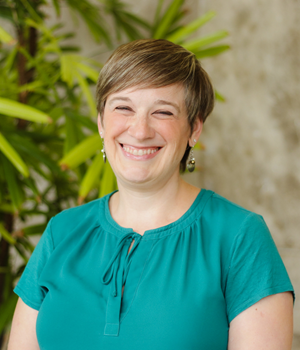by James Head, Tax Managing Director — National Tax Office (Private Client Services) at BDO USA
Featured in the Community Foundation's Webinar, Navigating the New Landscape: What the "One Big Beautiful Bill Act" Means for Philanthropy and Planning
As we move through the second-half of 2025, the philanthropic landscape is shifting in response to new tax legislation. While the recent One Big Beautiful Bill Act has cut or eliminated certain income tax credits and deductions for individuals, it has also made permanent many provisions from the 2017 Tax Cuts and Jobs Act (TCJA)—offering taxpayers much-needed certainty in the Federal tax area. This certainty, however, does not necessarily extend to charities, which now seem to face increased doubts as to the future of charitable giving amid the recent tax law changes.
For example, in 2017, just before the impact of the TCJA, it was estimated that 31% of Americans itemized their income tax deductions, reflecting that charitable giving was more tax advantageous to many high-income donors. By 2023, that number had dropped to just 9%, and so did the level of charitable giving. What will that percentage look like in 2026 and beyond? It’s hard to say. But what we do know is that many donors will likely accelerate their charitable giving endeavors this year, ahead of the applicable tax law changes taking effect next year.
At BDO, we are seeing a surge in interest in charitable vehicles that offer both significant philanthropic impact and tax advantages. Among the most popular are Charitable Remainder Trusts (CRTs), Charitable Lead Trusts (CLTs), and Donor-Advised Funds (DAFs).
CRTs are especially attractive in today’s high-interest rate environment. These irrevocable, tax-exempt trusts allow donors to contribute appreciated assets—like stock or real estate—and receive annual payments for a set term or for the life or lives of one or more individuals, such as the donor and the donor’s spouse. At the end of the trust’s term, the remaining assets go to charity. With higher interest rates, the charitable income tax deduction is larger, and the ultimate gift to charity is greater.
For example, a donor who is age 55 with $1 million in publicly traded stock, that has a low basis, could transfer the stock to a CRT for his lifetime, receive annual payments equal to 5% of the value of the trust assets annually. In addition, the donor can delay the immediate capital gain recognition on the stock sale and spread it over the trust term. Over time, it is estimated that the donor will receive $1.8 million in payments, while the charity could receive over $2.1 million upon the donor’s death. The annual payments to the donor could be much larger if the donor exceeds his actuarial life expectancy of 25 years. In addition, the tax-exempt growth of the assets placed in the trust permits a larger windfall to the charity when the trust terminates. This strategy not only benefits the donor in a tax efficient way financially, but also supports meaningful charitable work.
CLTs, on the other hand, are the inverse of CRTs, and perform better in low interest rate environments. They provide annual payments to charities for a set period or over the lifetime of one or more individuals, after which the remaining assets pass to non-charitable beneficiaries—often the donor’s children. CLTs are powerful tools for estate planning, helping to minimize or eliminate wealth transfer taxes while supporting charitable causes.
DAFs continue to be the fastest-growing charitable vehicle in the U.S. These accounts allow donors to make a tax-deductible contribution now and recommend grants to charities over time. DAFs offer flexibility, ease of use, and favorable adjusted gross income limitations compared to private foundations. They are ideal for donors who want to give strategically without the administrative burden of running a foundation.
Many donors are now combining these tools. For instance, naming a DAF as the remainder beneficiary of a CRT provides future flexibility in charitable distributions. Others are naming CRTs as beneficiaries of traditional IRAs to “stretch out” the receipt of taxable income streams that, under the SECURE Act, would otherwise be required to be received in full within ten years of the IRA owner’s death
Even for those who are not charitably inclined, these vehicles offer compelling financial benefits. Whether it is deferring capital gain recognition, reducing estate taxes, stretching out the receipt of taxable income over many years, or simply giving with greater impact, strategic philanthropy is more important than ever.
As we navigate this evolving landscape, I encourage donors to explore these charitable vehicle options and to work with trusted advisors who can assist them in aligning their giving with to facilitate their personal goals and the needs of the community. Guest Author,
Guest Author,
James Head, Tax Managing Director — National Tax Office (Private Client Services) at BDO USA
WEBINAR AVAILABLE: Navigating the New Landscape, What the "One Big Beautiful Bill Act" Means for Philanthropy and Planning
The Community Foundation for Northern Virginia hosted a session exploring how recent federal policy changes—highlighted in the “One Big Beautiful Bill Act”—may impact charitable giving and estate planning. The session featured policy expert Jeff Hamond and financial professionals Devin Johnson (Mason Investment Advisory Services) and James Head (BDO). Our presenters offer both high-level insights and practical strategies for donors and advisors.
Watch the Webinar
The Community Foundation team is happy to help you structure charitable giving tools and plans to achieve your clients’ philanthropic goals—whether through beneficiary designations or any other type of charitable giving vehicle. This email address is being protected from spambots. You need JavaScript enabled to view it.!
The information contained in this article is provided for informational purposes only. It is not intended as legal, accounting, or financial planning advice.


 Questions?
Questions? Questions?
Questions?



